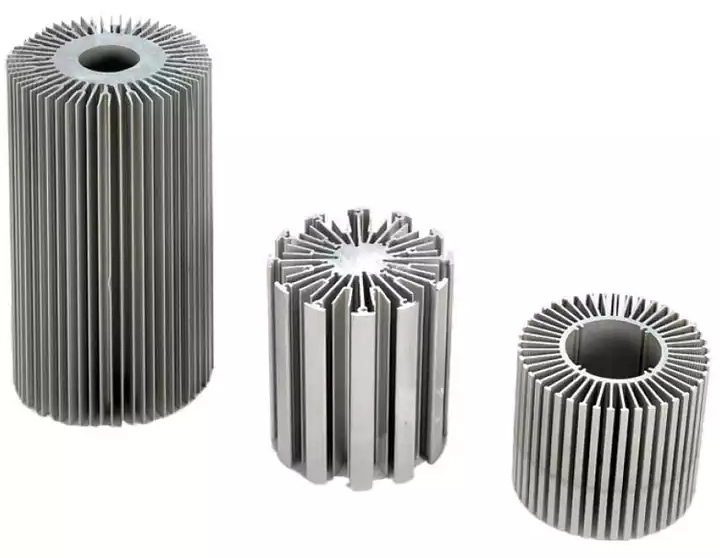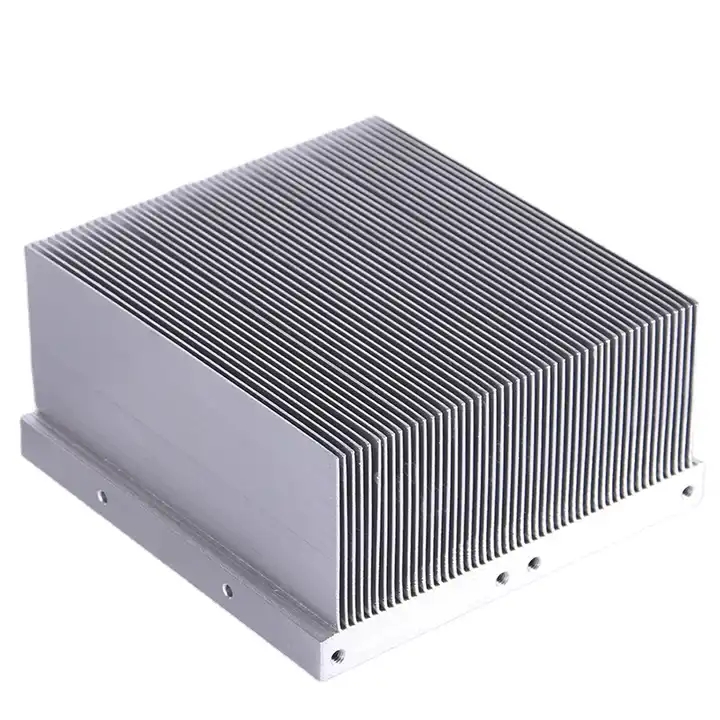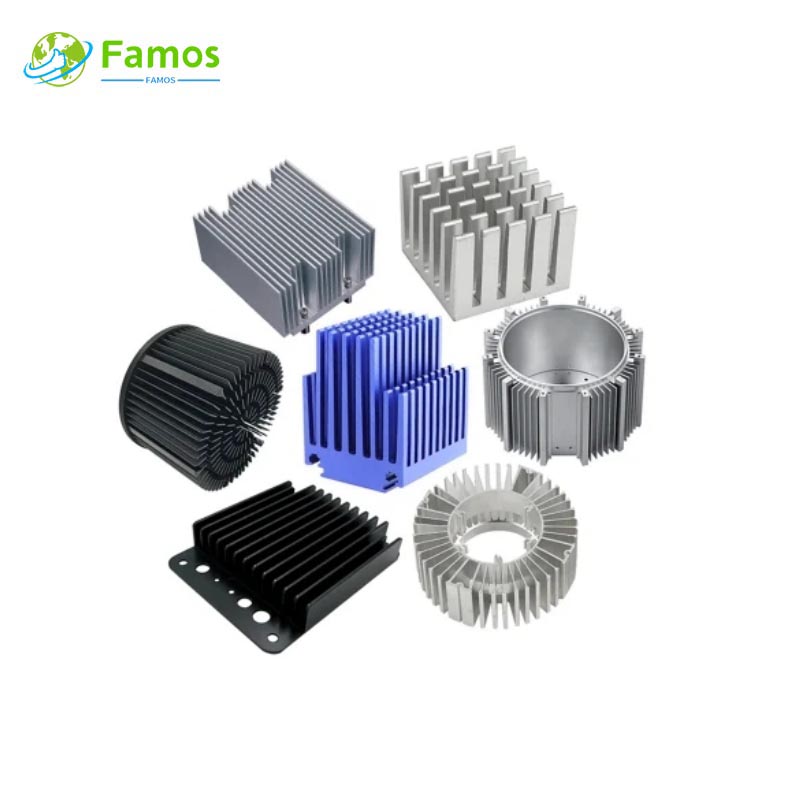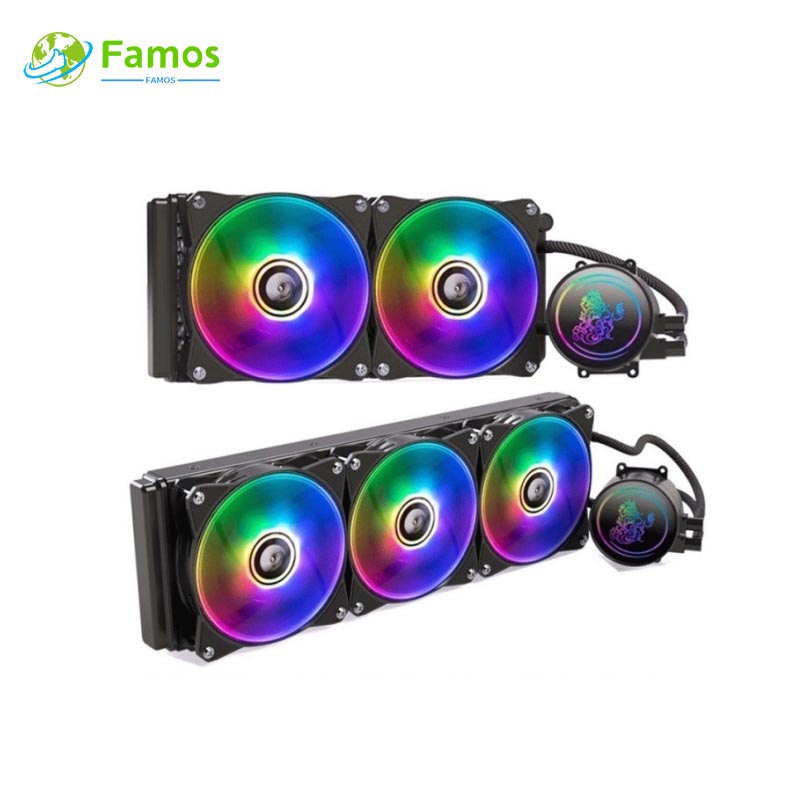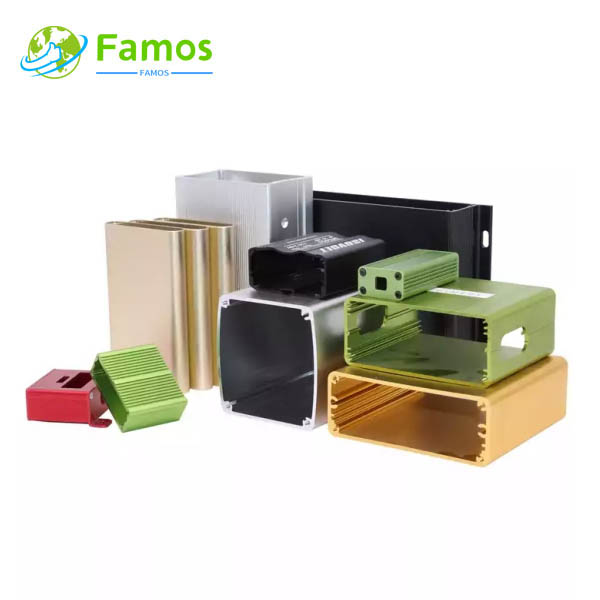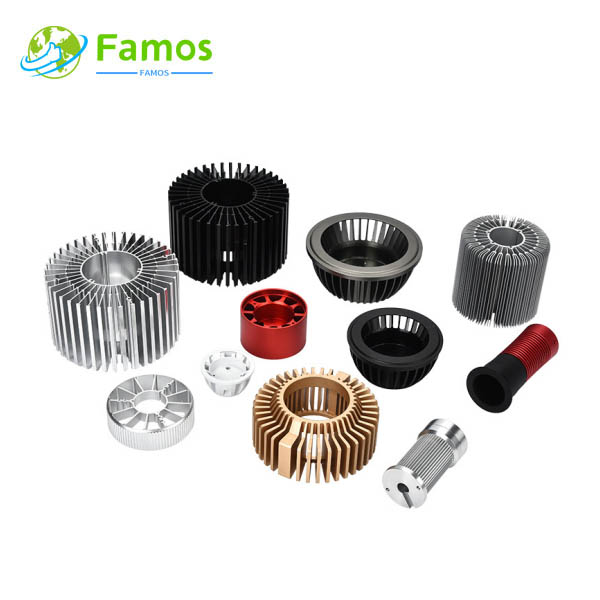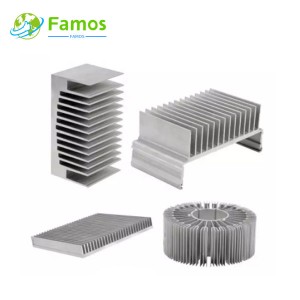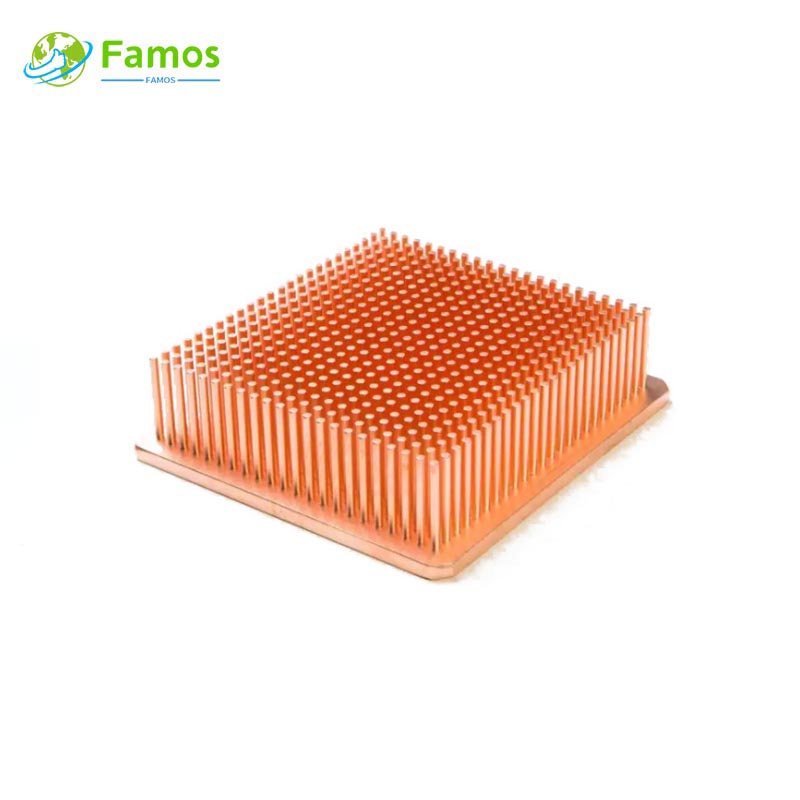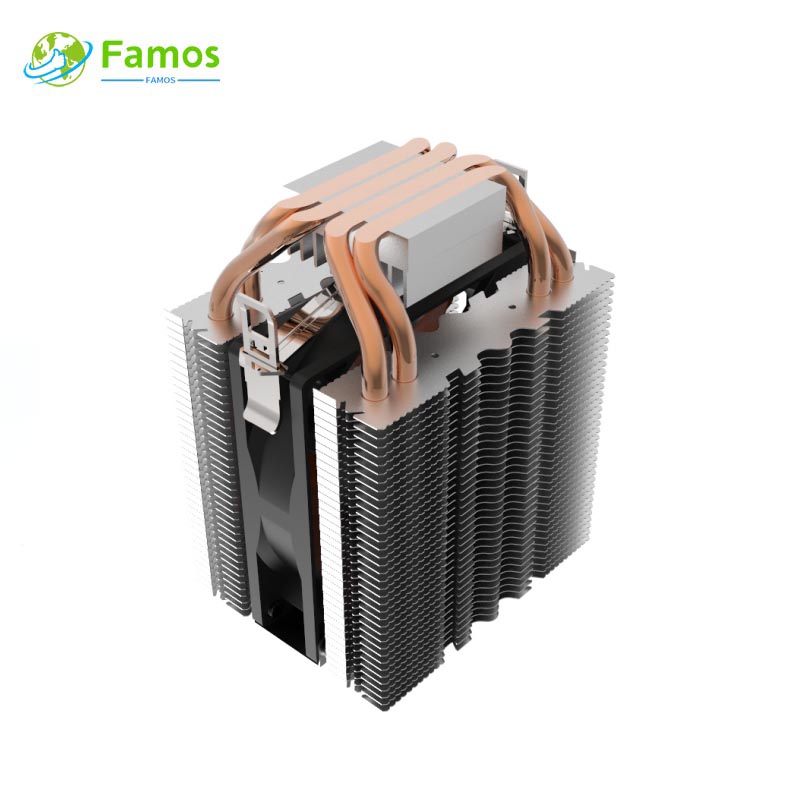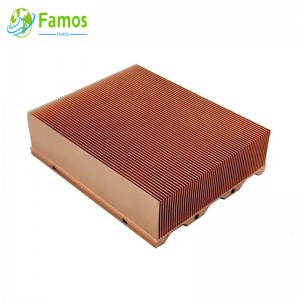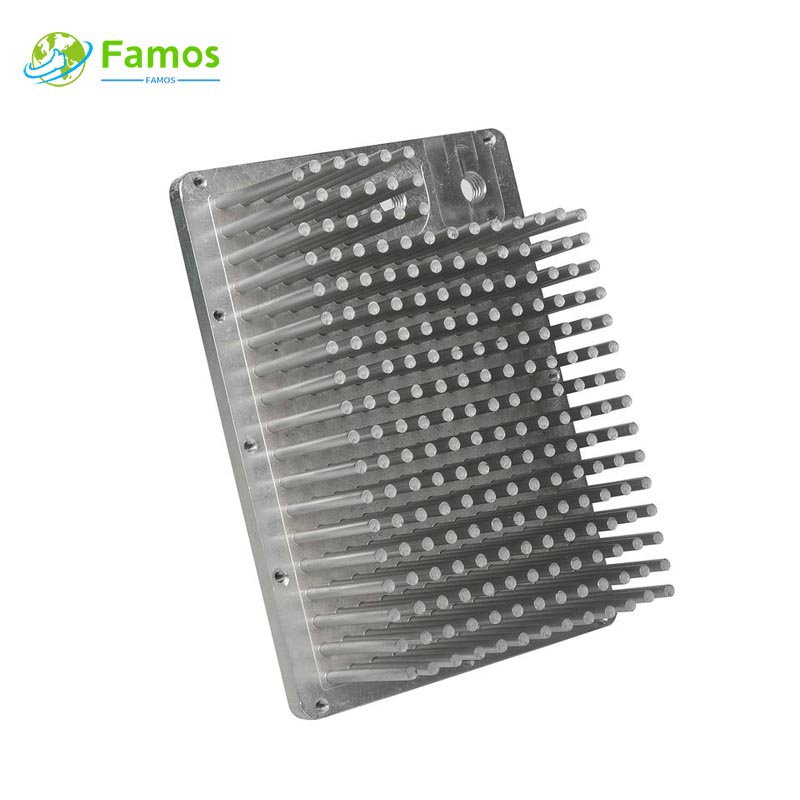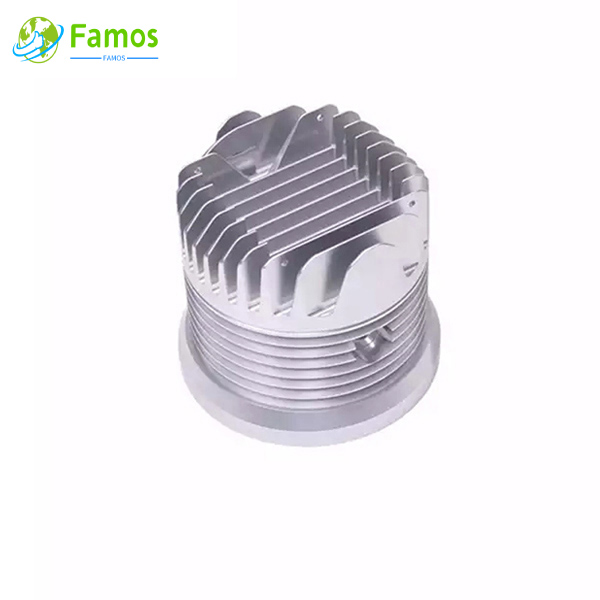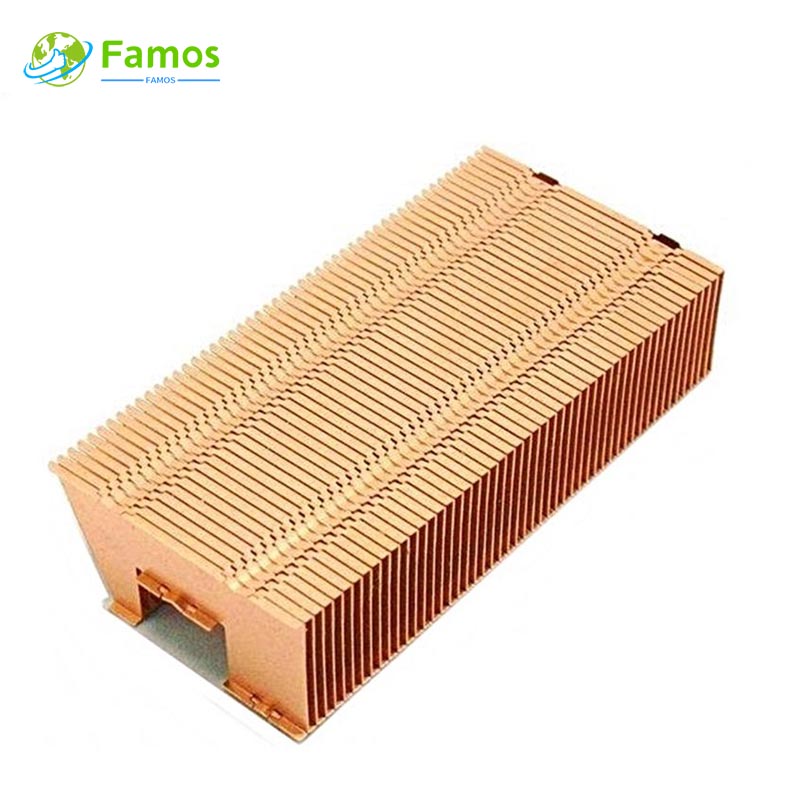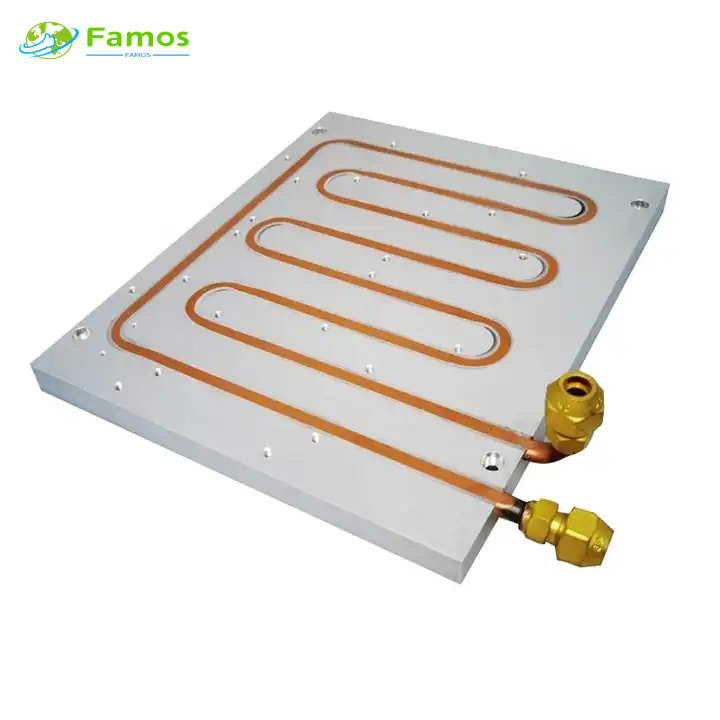Heat sinks are used to dissipate heat from electronic components such as CPUs, LEDs, and power electronics. Skiving and extrusion are two popular methods for manufacturing heat sinks. Here are the differences between the skiving heat sink and extrusion heat sink techniques:
- 1. Manufacturing process
Extrusion is a process of forcing aluminum material through a die to produce a desired shape. It involves pushing heated aluminum through a shaped hole in a die. The process produces heat sinks with uniform cross-section and consistent length.
Skiving, on the other hand, is a machining process that involves slicing a block of aluminum into thin slices to create fins. A series of parallel cuts are made into the material, and the thin slices are then bent to the appropriate angle to form the fins.
- 2. Size and complexity
Extrusion is better suited for producing large and complex heat sinks. Since it is a continuous process, it can be used to produce heat sinks of virtually any length. Extrusion can also produce heat sinks with larger cross-sectional areas.
Skiving, on the other hand, is ideal for producing smaller heat sinks with a lower aspect ratio (height-to-width ratio). Skived heat sinks typically have thinner fins than extruded heat sinks, and they are generally more suitable for low-power applications.
- 3. Shape and structure
The Extrusion heat sink is manufactured by extruding aluminum material, so the heat sink is usually in regular shapes such as a straight line or L-shape. The Extrusion heat sink usually has a thick wall structure, which is sturdy and durable overall, and can withstand large heat loads, making it suitable for high-power heat dissipation applications. The surface of the Extrusion heat sink is usually specially treated to increase surface area and heat dissipation efficiency.
The Skiving heat sink is manufactured by cutting aluminum material. Skiving fins typically have a thin-walled structure with thin fins and use a bending process to maximize surface area. Due to the unique structure of the fins, Skiving fins typically have higher heat dissipation coefficients and lower wind resistance.
- 4. Thermal performance
Skived heat sinks generally have a higher thermal performance than extruded heat sinks because they have thinner fins and more surface area per unit volume. This allows them to dissipate heat more efficiently. However, in some cases, the complexity of the extruded heat sink design can make up for the reduced thermal performance. When you need a fin density that can’t be obtained using extrusion technology a skived fin heat sink can be a good alternative to an extruded heat sink.
- 5. Cost
Extrusion is generally less expensive than skiving as it is a continuous process that requires fewer tooling changes. However, designing and creating the initial die can be expensive.
Skiving, on the other hand, is more expensive due to the need for multiple machining operations and a higher level of material waste.
In summary, extrusion is best suited for producing large, complex heat sinks, while skiving is ideal for smaller, low-power applications. Both methods have their advantages and disadvantages, and the final choice depends on the specific requirements of the application.
If You Are in Business, You May Like
Types of Heat Sink
In order to meet different heat dissipation requirements, our factory can produce different type heat sinks with many different process, such as below:
Post time: Apr-22-2023

